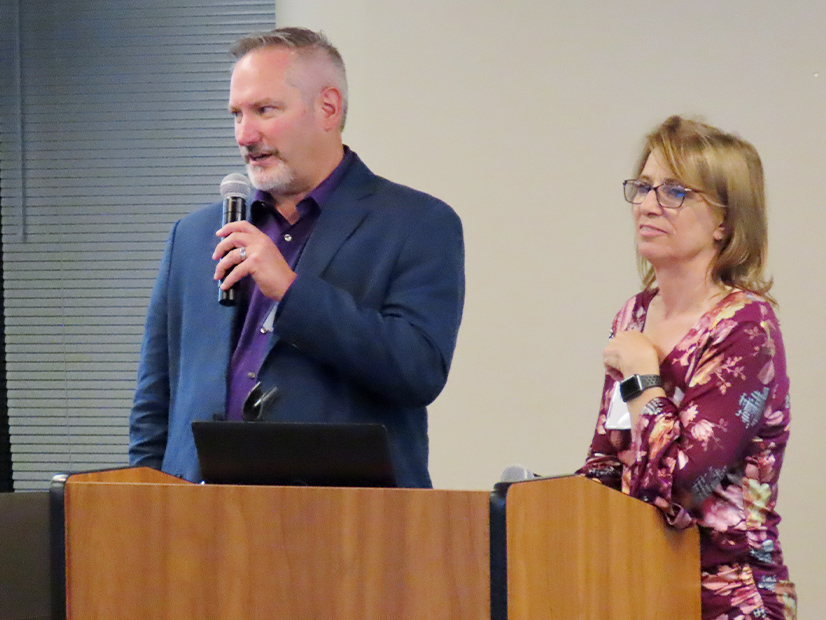
ATLANTA — With NERC’s newest cold weather standards having passed their final ballot and ready for submission to the organization’s Board of Trustees, a member of the team that drafted the standards on Wednesday reminded stakeholders that the work of protecting North America’s grid from winter weather has only begun.
The new reliability standards EOP-012-1 (Extreme cold weather preparedness and operations) and EOP-011-3 (Emergency operations) were submitted to industry stakeholders for their final ballot Sept. 23 and passed Sept. 30, along with their implementation plan. Trustees are expected to approve them at the board’s upcoming meeting in New Orleans, after which they will await acceptance from FERC.
Speaking at the North American Generator Forum’s annual Compliance Conference at NERC’s headquarters, David Lemmons, co-founder of consulting firm Greybeard Compliance Services and head of NAGF’s Cold Weather Working Group, jokingly observed that “it’s going to take a few days” for the standards to take effect. He was referring to the fact that EOP-011-3 will not be enforceable until 18 months after the commission grants its approval, while EOP-012-1 will not fully take effect for more than six years from that point.
Joining Lemmons was Occidental Power Services’ Venona Greaff, who outlined some of the changes that utilities can expect in EOP-012-1 and EOP-011-3. Greaff served on the standard drafting teams for both Project 2021-07, which drafted the new standards, and its predecessor Project 2019-06, which created three cold weather standards approved by FERC last year. (See FERC Approves Cold Weather Standards.)
The latest project was initiated in response to NERC and FERC’s joint inquiry into the winter storms of February 2021 that knocked thousands of megawatts of capacity offline in Texas and left households across the state without power for days. (See FERC, NERC Release Final Texas Storm Report.) Recommendations from the report include requiring generator owners (GOs) and operators (GOPs) to build or retrofit generating units to operate to specific ambient temperatures and weather, and to perform annual training on winterization plans.
The two standards passed last month comprise Phase 1 of the overall cold weather strategy and were developed under an accelerated schedule in hopes of getting them before FERC sooner. (See NERC Standards Committee Fast Tracks Cold Weather Project.) Now that their development is finished, the organization plans to move to Phase 2, which will address more recommendations from the report such as specifying the role of GOs and GOPs, as well as balancing authorities, in determining generator capacity, along with requirements protecting natural gas infrastructure from load shedding. NERC currently hopes to finish this stage by next year.
Although the SDT did not add these elements to its remit in order to avoid delaying completion, the members did take “some steps in Phase 1 to address some of the things that we’re going to have to address in Phase 2,” Greaff said. In particular, she noted the FERC-NERC report’s recommendation that GOs “identify cold-weather critical components and systems for each generating unit.” Greaff said the team decided to go ahead and create specific definitions of relevant terms so that “when we get to Phase 2, we [will] already have a foundation layer” to build on.



